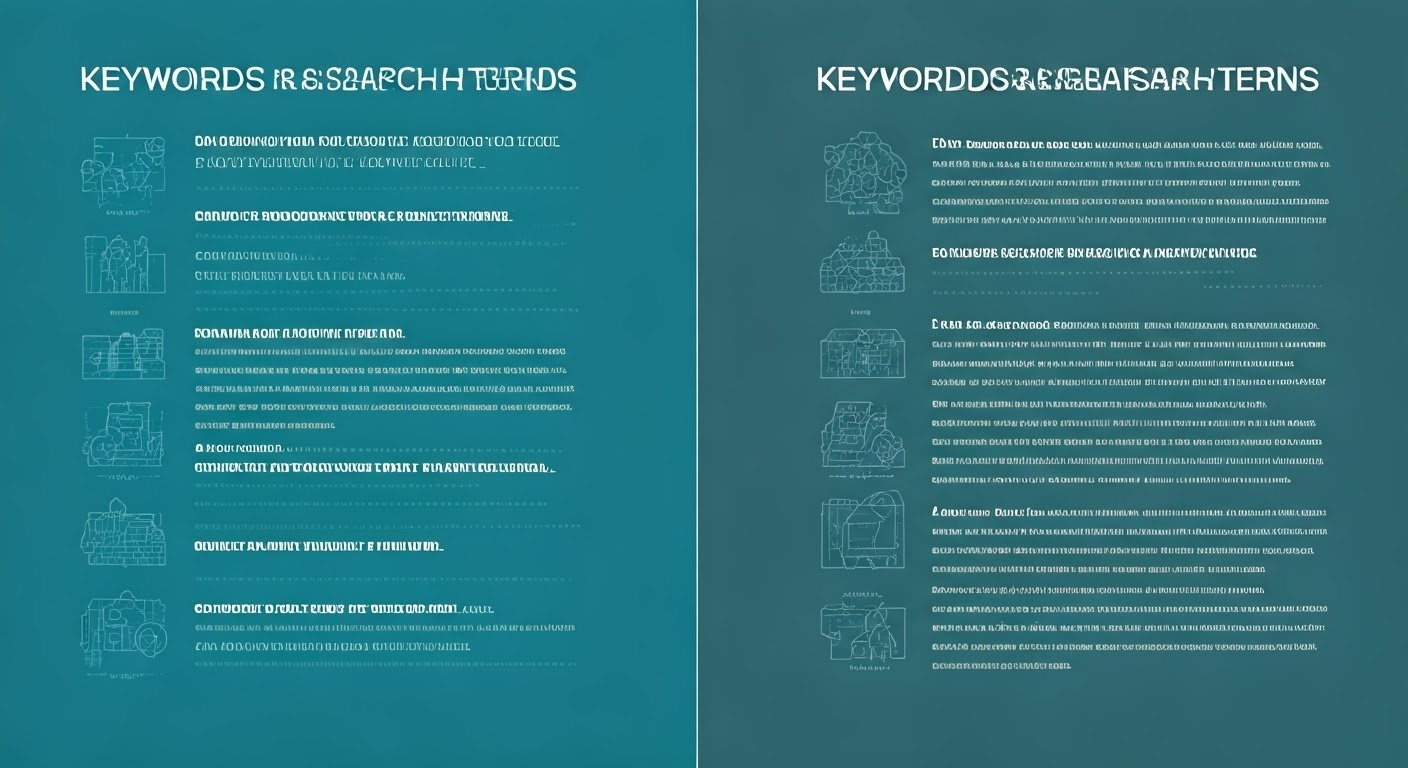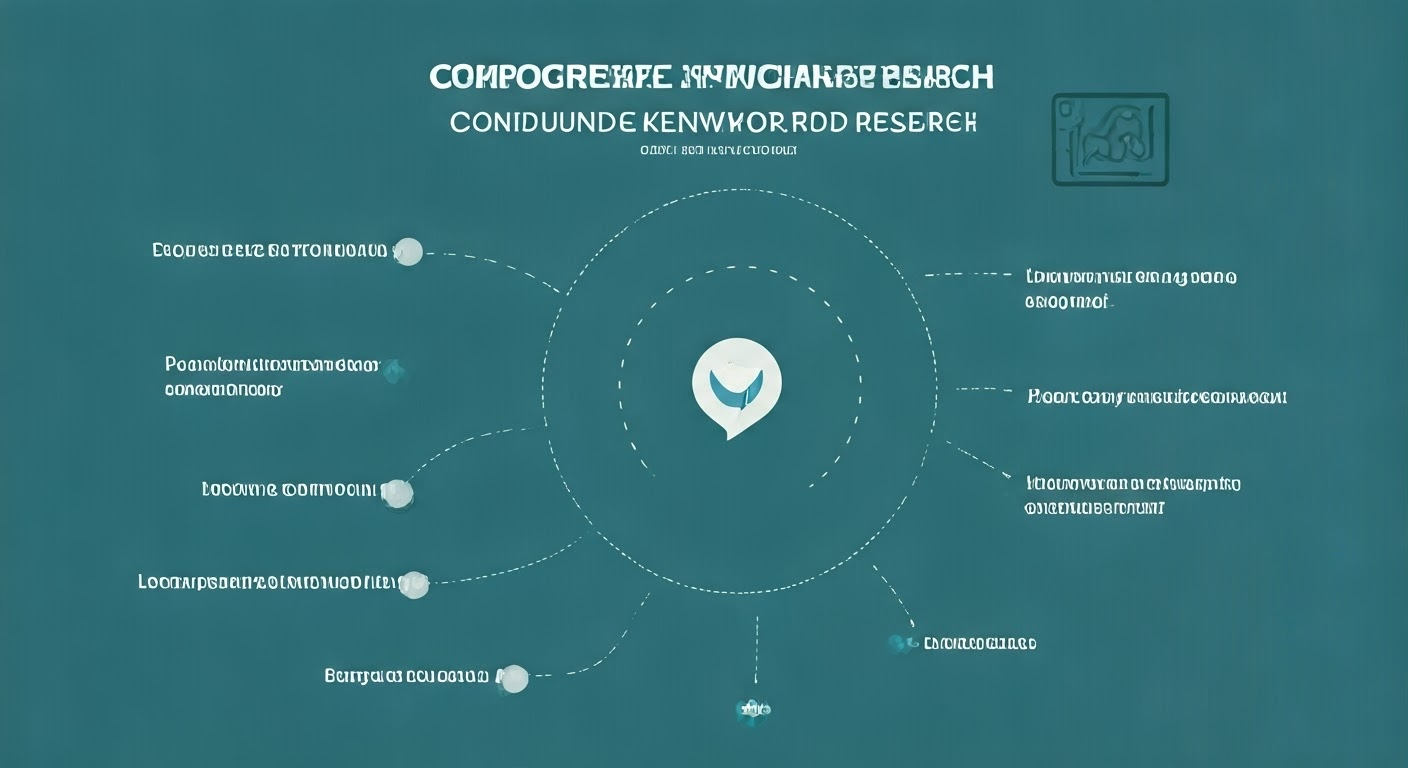January 2, 2025
Maximizing Success: Effective Use of Keywords in AdWords

Greg Kopyltsov
Founder
keywords in adwords


In the competitive landscape of online advertising, a well-crafted keyword strategy can be the difference between a successful AdWords campaign and one that fails to gain traction. By understanding how to effectively utilize keywords, you can ensure that your ads appear in front of the right audience at the right time. This involves conducting thorough keyword research using tools such as the Google Keyword Planner, analyzing search volume, and optimizing your bids to maximize your return on investment. By aligning your keywords with a compelling landing page, you can effectively convert clicks into valuable leads and customers.

Before diving into the intricacies of keyword strategy, it's essential to grasp the fundamental concept of AdWords keywords. Simply put, keywords are the words or phrases that prospective customers enter into search engines when looking for products or services like yours. By bidding on relevant keywords within your Google Ads account, you increase the visibility of your ads to users who are actively searching for what you offer. For instance, if you own an online clothing store, your keyword list might include terms like "summer dresses," "men's shoes," or "designer jeans."
When selecting keywords for your campaigns, it's important to consider the concept of "match types," which determine how closely a user's search query must match your chosen keyword for your ad to be displayed. A broad match, for example, allows your ad to show for a wider range of related searches, while more specific match types offer greater control over who sees your ad. Understanding the nuances of match types will allow you to fine-tune your targeting and maximize the effectiveness of your campaigns.
While often used interchangeably, the terms "keywords" and "search terms" have distinct meanings in the realm of Google Ads. It's crucial to recognize this distinction to effectively target your desired audience and optimize your campaigns.
In essence, keywords are the phrases that advertisers, like yourself, choose and input into their Google Ads accounts. This curated keyword list serves as a guide for Google, signaling which search queries you want your ads to appear for. On the other hand, search terms are the actual words or phrases that potential customers type into the Google search bar.
Ideally, there should be a significant overlap between your chosen keywords and the search terms used by your target audience. However, it's important to analyze the performance of your keywords and make adjustments based on actual search terms to ensure that your ads are reaching the most relevant users. This continual refinement of Google Ads keywords is essential for optimizing your campaigns and achieving a higher return on investment.
As previously mentioned, understanding the three primary keyword match types is fundamental to crafting a successful keyword strategy. Each match type offers varying levels of control and reach, allowing you to tailor your ad targeting to your specific goals:
Once you have a solid grasp of keyword fundamentals, you can proceed to set up your first AdWords campaign. Begin by creating an account and navigating to the campaign creation section. Select a campaign objective, target your desired audience, and establish your budget. You'll then create ad groups, which are sets of ads that target a specific group of keywords.
Utilize the keyword tool within your Google Ads account to research relevant keywords and group them into thematic ad groups. This organization is key for ensuring that your ads appear for relevant searches and that users are directed to landing pages that align with their search intent. Carefully consider bidding strategies and optimize your ads to achieve the best possible results.
Embarking on your first AdWords campaign requires some key elements to ensure a smooth and successful launch. First and foremost, you'll need to create a Google Ads account, which will serve as the central hub for managing your campaigns, keywords, bids, and budgets.
Next, it's crucial to establish a daily budget that aligns with your overall marketing goals and resources. This will determine how much you're willing to spend each day on your ads. Thoroughly consider your target audience, industry benchmarks, and potential return on investment when setting your budget.
Finally, delve into the world of keywords using the Google Keyword Planner tool. This powerful resource provides valuable insights into search volume, competition, and estimated costs for various keywords. By utilizing this tool effectively, you can gain a deeper understanding of which keywords are most likely to drive relevant traffic to your website and achieve your desired advertising outcomes.
Selecting the right keywords is paramount to the success of any Google Ads campaign. Using the wrong keywords can result in wasted ad spend, low click-through rates, and a poor return on investment. So how do you ensure you're targeting the most effective keywords for your business?
Thorough keyword research forms the foundation of effective keyword selection. As previously mentioned, utilize tools like the Google Keyword Planner to uncover relevant keywords, analyze search volume, and assess competition. By understanding what potential customers are searching for, you can identify high-value keywords that align with your offerings.
Don't be afraid to get creative and explore new keywords that you may not have initially considered. Analyze your competitors' strategies, industry trends, and even customer feedback to unearth valuable keyword opportunities. The process of keyword research is an ongoing endeavor, requiring regular monitoring, analysis, and refinement to ensure that your campaigns are targeting the most effective keywords for your business goals.

Now, let's break down the process of keyword optimization into manageable steps to guide you through crafting a successful strategy. This will involve a combination of keyword research, careful organization of keywords into ad groups, and ongoing monitoring and refinement of your campaigns.
It all starts with comprehensive keyword research to identify relevant and high-value keywords for your business. Once you have a solid list, group those keywords into thematic ad groups that reflect different aspects of your offerings or target specific customer segments. Finally, implement negative keywords to prevent your ads from appearing for irrelevant searches, ensuring that you're maximizing your ad spend and reaching the most qualified audience.
Keyword research is the bedrock of a successful AdWords campaign, providing valuable insights into the search behavior of your target audience. It involves identifying keywords that are not only relevant to your business but also have significant search volume and low competition. This meticulous process unveils golden opportunities to connect with potential customers actively searching for products or services you offer.
The Google Keyword Planner, a free tool within your Google Ads account, is an excellent starting point for your research. Simply input seed keywords related to your business and explore the extensive list of keyword ideas it generates. Pay close attention to metrics like average monthly searches which indicate the popularity of a keyword, and competition, which reflects the number of advertisers bidding on that particular term.
Consider using additional keyword research tools, such as WordStream’s Free Keyword Tool or Moz Keyword Explorer, to broaden your reach and discover hidden gems that might have been overlooked. Remember, comprehensive keyword research is an ongoing endeavor, so dedicate time to regularly revisit your keyword list, analyze performance, and unearth new opportunities to expand your reach and optimize ad spend.
Once you've compiled a robust list of keywords, the next step is to organize them effectively into ad groups. Ad groups are like containers that hold groups of keywords sharing a common theme or targeting a specific customer segment. This organization is crucial for creating highly relevant ads that resonate with user intent and drive better campaign performance.
Think of ad groups as mini-campaigns within your broader Google Ads campaign. Each ad group should focus on a distinct product, service, or topic related to your business. For instance, if you own an online shoe store, you could create separate ad groups for "women's athletic shoes," "men's dress shoes," or "children's sandals."
By segmenting your keywords into tightly themed ad groups, you can create laser-focused ads that directly address the specific needs and interests of users searching for those terms. This granularity enhances the relevance of your ads, leading to higher click-through rates, improved quality scores, and ultimately a more successful AdWords campaign.
While positive keywords tell Google which search queries to target, negative keywords play an equally important role by indicating which search terms you want to exclude. Implementing negative keywords is a strategic move to refine your traffic and ensure that your ads are displayed only to users who are genuinely interested in what you offer.
When you add a negative keyword to your campaign or ad group, you're essentially telling Google Ads not to display your ads for any search queries containing that specific term. For example, if you sell high-end jewelry and don't offer discounts, you might add negative keywords like "cheap," "discount," or "sale" to filter out price-sensitive shoppers.
Regularly reviewing your search terms report and adding irrelevant terms as negative keywords is crucial for maximizing ad spend and preventing your budget from being drained by unqualified clicks. This continual refinement ensures that your ads are shown to the right audience, boosting your chances of conversions and maximizing your return on investment.
Once your campaigns are up and running, it's essential to monitor their performance and make adjustments to optimize their effectiveness. A key aspect of this ongoing optimization involves adjusting bids for high-performance keywords. Your bid is the maximum amount you are willing to pay for a click on your ad, and strategically managing these bids can significantly impact your campaign's success.
Start by identifying high-performance keywords, which are those driving significant traffic, conversions, or other desired actions. These keywords often have a high-quality score, a metric Google uses to determine the relevance and usefulness of your ads and landing pages to users. A good quality score can lower your cost-per-click and improve ad positions.
Consider increasing bids for high-performing keywords to improve your ad's visibility and potentially attract more clicks and conversions. Conversely, you might lower bids for keywords that aren't performing as well to reduce wasted ad spend. Regularly analyzing and fine-tuning your bid strategy is crucial for maximizing campaign performance, ensuring you're getting the most out of your AdWords budget.
Once you have a solid grasp of the basic principles of keyword research, organization, and bidding, you can explore more advanced strategies to further enhance your AdWords campaign performance. This involves incorporating long-tail keywords, analyzing your competitors' tactics, and utilizing different keyword matching options effectively.
Long-tail keywords are longer and more specific phrases that target niche audiences with higher purchase intent. By including these keywords in your strategy, you can capture valuable traffic that might be overlooked by broader keywords. Analyzing your competitors' keywords provides valuable insights into their strategies and helps you identify potential opportunities to differentiate your campaigns. Remember, continuous experimentation and optimization are key to unlocking the full potential of your AdWords campaigns.
In the realm of keyword research, long-tail keywords are often overlooked gems that can significantly enhance your AdWords campaign performance. Unlike their shorter and broader counterparts, long-tail keywords consist of three or more words, forming highly specific phrases that target niche audiences with greater purchase intent.
For instance, while the keyword "shoes" might attract a vast audience with varied intentions, the long-tail keyword "women's running shoes for plantar fasciitis" targets a very specific customer segment actively seeking a particular product. This granular targeting is the power of long-tail keywords, enabling you to connect with users at a later stage in the buyer's journey when they are closer to making a purchase decision.
Incorporating long-tail keywords into your strategy enhances the overall relevance of your ads, improving your click-through rates and quality scores. It allows for more targeted bidding, ensuring that your ad spend reaches the most qualified audience likely to convert. Moreover, long-tail keywords often come with lower competition, offering the potential for lower cost-per-click and a greater return on investment.
In the competitive landscape of online advertising, keeping a watchful eye on your competitors is crucial for staying ahead of the curve and identifying valuable opportunities. This rings true in the realm of keywords, as understanding your competitors' tactics can provide valuable insights to enhance your AdWords campaigns.
By uncovering the keywords your competitors are targeting effectively, you gain a deeper understanding of their strategies, strengths, and potential weaknesses. This knowledge empowers you to identify untapped keyword opportunities, refine your bidding strategy, and differentiate your ads for greater impact.
Several keyword tools, such as SEMrush and SpyFu, specialize in competitive analysis and can unveil your competitors' top-performing keywords, ad copy, and landing page strategies. Utilize these tools to identify gaps in their keyword coverage, discover new long-tail opportunities, and uncover emerging trends in your industry. Harnessing the power of competitor keyword analysis can give you a competitive edge and drive better results for your AdWords campaigns.
In the ever-changing digital advertising landscape, simply launching an AdWords campaign isn't enough to guarantee success. Continuous monitoring, analysis, and optimization are crucial for maximizing the effectiveness of your keywords and ensuring your campaigns are meeting your business objectives.
Regularly review key performance indicators (KPIs) such as click-through rate (CTR), conversion rate, and cost-per-conversion to gauge the overall success of your campaigns. Utilize the search terms report to understand which search queries are driving traffic to your site and identify potential new keywords to target or add as negatives. This iterative process of optimization allows you to fine-tune your keyword strategy, eliminate wasted ad spend, and ultimately maximize your return on investment.
The search terms report within your Google Ads account is an invaluable resource for gaining deeper insights into the search behavior of your potential customers. It provides a detailed breakdown of the actual search queries that triggered your ads, shedding light on the language and intent of users who are actively searching for products or services like yours.
Regularly reviewing this report is a good idea for several reasons. Firstly, it allows you to identify new, potentially high-converting keywords that you may have overlooked during your initial keyword research. By adding these terms to your campaigns, you can expand your reach and attract a more qualified audience.
Secondly, the search terms report helps you refine your targeting by identifying irrelevant or low-performing queries. By adding these terms as negative keywords, you can prevent your ads from showing for irrelevant searches, improving your click-through rates and maximizing your ad spend. Embracing the wealth of information offered by the search terms report empowers you to optimize your keyword strategy, refine your targeting, and ultimately drive better results for your AdWords campaigns.
In the dynamic world of digital marketing, continuous optimization is not just a recommendation but a necessity. As consumer behavior, market trends, and search algorithms constantly evolve, neglecting the ongoing optimization of your AdWords campaigns can lead to stagnant or declining performance.
Keyword optimization, in particular, plays a pivotal role in ensuring your ads remain relevant, visible, and effective. Continuous optimization involves regularly reviewing your keyword performance, identifying areas for improvement, and implementing best practices to enhance your campaigns.
This includes conducting fresh keyword research to uncover new opportunities, adding negative keywords to refine targeting, adjusting bids based on performance, and testing different ad variations to improve click-through rates. By embracing the iterative nature of keyword optimization and remaining adaptable to the ever-changing digital landscape, you can ensure your AdWords campaigns remain competitive, cost-effective, and ultimately successful in achieving your business goals.
KeywordSearch has an AI Audience builder that helps you create the best ad audiences for YouTube & Google ads in seconds. In a just a few clicks, our AI algorithm analyzes your business, audience data, uncovers hidden patterns, and identifies the most relevant and high-performing audiences for your Google & YouTube Ad campaigns.
You can also use KeywordSearch to Discover the Best Keywords to rank your YouTube Videos, Websites with SEO & Even Discover Keywords for Google & YouTube Ads.
If you’re looking to SuperCharge Your Ad Audiences with AI - Sign up for KeywordSearch.com for a 5 Day Free Trial Today!
In conclusion, mastering keyword usage in AdWords is pivotal for successful campaigns. From understanding the differences between keywords and search terms to implementing advanced strategies like long-tail keyword targeting and competitor analysis, a well-optimized keyword strategy can significantly enhance campaign performance. Regularly reviewing, refining, and optimizing your keyword selection is key to sustained success in AdWords. By utilizing tools like the Search Terms Report and continuously adjusting bids based on performance, you can maximize the effectiveness of your campaigns. Remember, effective keyword optimization is an ongoing process that requires dedication and flexibility to adapt to changing trends and audience behaviors.
Continuous optimization is key! It's best practice to review your keyword strategy regularly, implementing adjustments to maintain optimal performance and ensure your ads remain aligned with relevant keywords.
While you can use the same keywords, it's generally more effective to tailor your strategy. Segmenting keywords into relevant ad groups within specific campaigns allows for more tailored messaging and better keyword performance insights.
Common mistakes include insufficient keyword research, ignoring negative keywords, and not utilizing different match types effectively. These oversights can lead to irrelevant traffic and wasted ad spend.
Regular keyword analysis and scrutiny of your search terms report are crucial. Low click-through rates, a poor quality score, and high bounce rates indicate non-performing keywords, helping you refine your strategy for better results.
Start with broad match modifiers to gather data, then gradually incorporate more specific keywords. This balanced approach helps you reach a wider audience while refining your targeting for better keyword optimization based on performance insights.